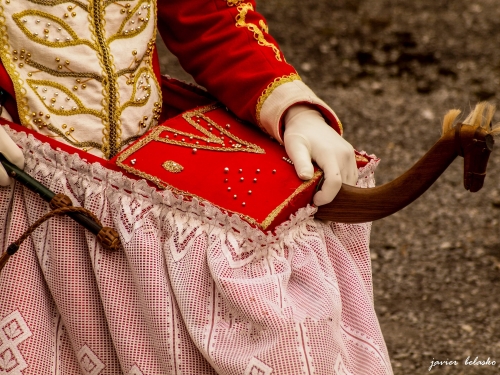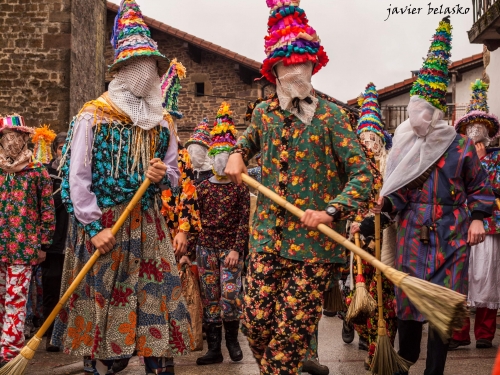Frontiers and cultural bridges within the ritualistic structure of carnival
- Kepa FERNANDEZ DE LARRINOA Permanent Anthropology teacher at UPV-EHU, Director of the magazine Zainak. President of the Department of Anthopology and Ethnography at SEV
- 19/ 11/ 2001
This article provides a general description of the reasons for our study of Carnival.

Ritual aesthetics and collective performances: carnival and its relation to the festivals and rites of Winter
Carnival forms part of a large group of ritual festivals and celebrations which take place in winter, mainly in the rural societies of Europe and the Mediterranean agricultural societies bordering with this continent. In other words, carnival is a local expression of a type of ritual behaviour which spreads over an extensive geographical area; its organization takes place at a specific time of year and its main social and economic base are the peasants and the agricultural world.
Two relevant characteristics in this ample array of rural festivals and rites of winter could be added to the previous ones: first, a syncretism of beliefs and calendars, which can be seen in the fact that different religions and temporal concepts that we will speak about later converge in these festivals. Second, the rural festivals and rites of winter are stagings which have a high level of aesthetic homogeneity.
The syncretic aspect of the winter festivals of the different religions of Europe and of the bordering Mediterranean regions have been analyzed by diverse experts. They have pointed out that in modern winter festivals one can clearly observe a series of juxtapositions which go from the first Indo-European religions and Mediterranean mythologies to the Roman and Judaic calendars and festivals, as well as medieval Christianity.
The homogeneity which characterizes these winter festivals is reflected in the choice of the dates when they are celebrated, in the subjects which are ritualized and the way that is done so. This is why a significant number of scholars believe that the different winter festivals are local versions of a single, original celebration; i.e., within the diversity there is a common theme. This idea is additionally confirmed by another coincidence - the winter festivals are a unique dramatization of the very relationships between people and of their relationship with nature and the environment where they live. The inter-group relationships and the relationships of social groups with elements of nature represented in the winter festivals encompass a series of coinciding events which are listed below.
First, these festivals are cyclical and seasonal. They are festivals directly related to the biological rhythms of nature and to the periodicity of agricultural and pastoral activities of the rural world. Modern ethnological research shows us that the first idea proves to be more certain when the degree of economic self-sufficiency of the rural society which is celebrating the festival is greater.
Second, in these festivals we can observe an important use of costumes and masks which represent animals, especially those which inhabit mountains and forests: horses, bears, bulls, wild cats, deer and different types of birds are amongst those represented more often. More specifically, they are animals which should be hunted, domesticated or slaughtered - in short, animals to be dominated and controlled.
Third, and depending on the date of the celebration of the winter festivals, we can distinguish two main periods of festivals. The first takes place between October-November and Christmas (although not all the festivals which are celebrated at this time form part of the cycle of winter festivals) and the second takes place around Carnival time.
Fourth, the winter festivals have a clear theatrical, symbolical and social meaning. The high level of theatricality raises socially relevant questions. In this regard, many winter festivals represent rites of puberty and of socialization in the rural community which is celebrating them. In the same way, the meal and the stock of food and drink by a certain part of the population through the establishment of rounds of Epiphany or Christmas gifts are elements seen throughout the presence of these festivals.
Like most winter festivals in Europe and the Mediterranean, carnival is a collective rite of passage and a strategy of socialization in the world of public relations. Along with the dancing, singing, the masks and costumes, the food and drink play an importan role in achieving this.








